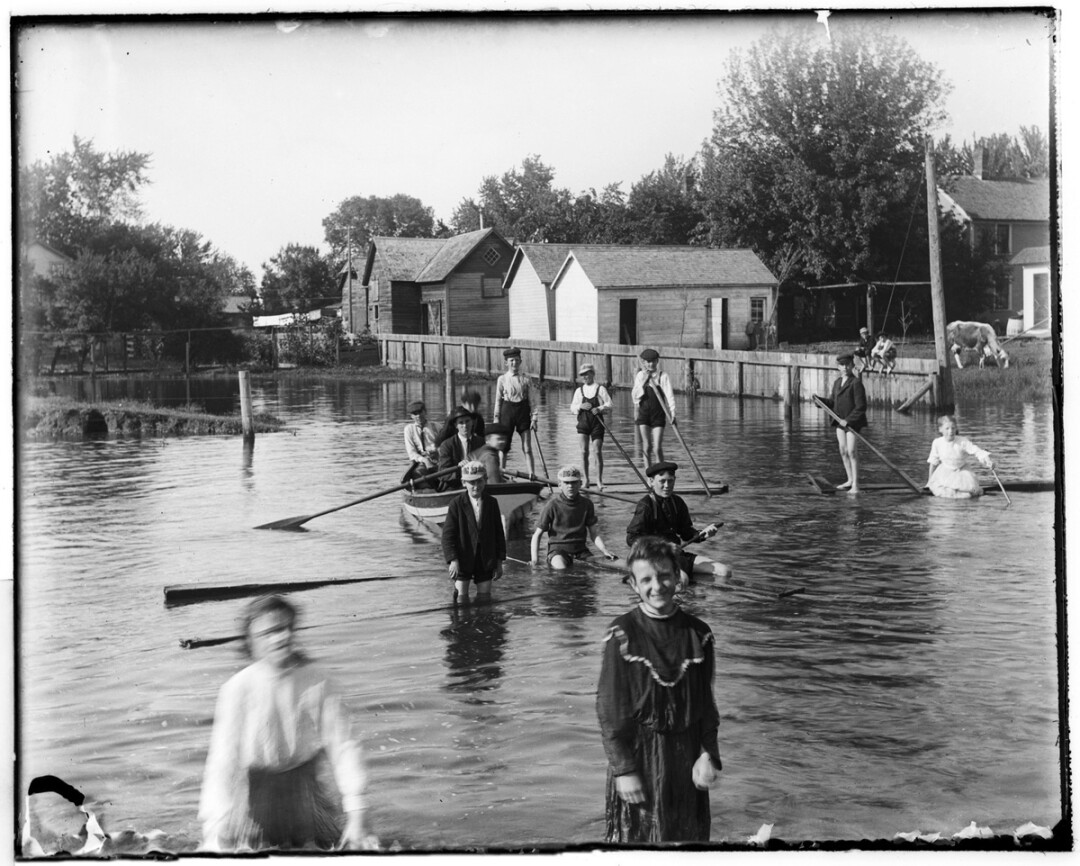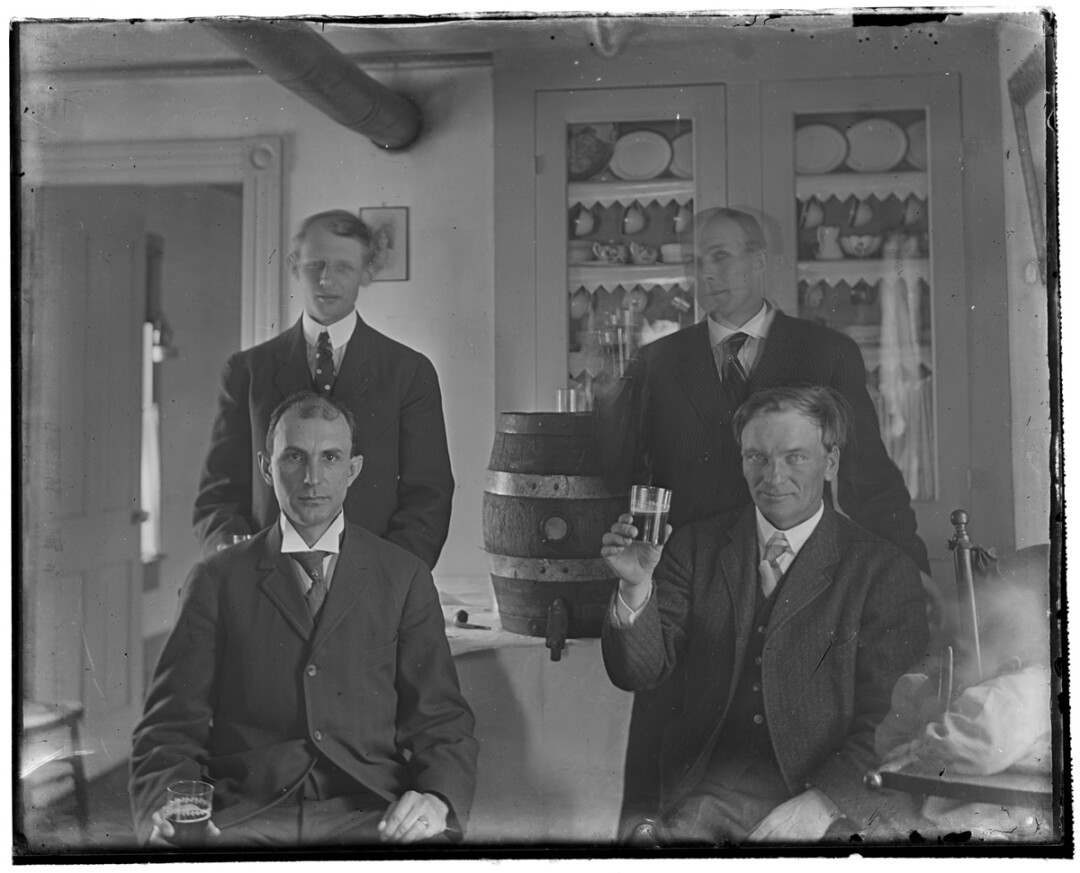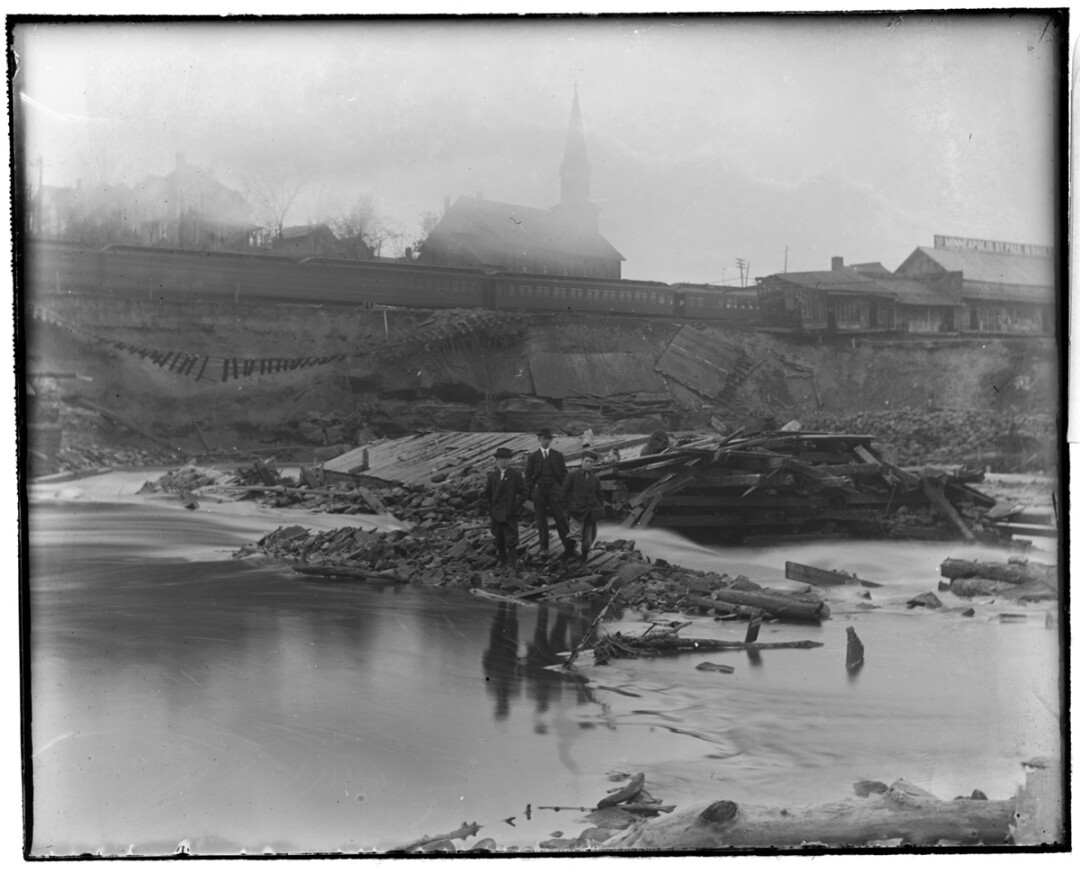An Eye for the Everyday

In the Age of the Selfie, when seemingly every moment is digitally documented by the handy devices we carry in our pockets, it’s hard to imagine a time when photography was a rarity, often reserved for only the most solemn and ceremonial of occasions. In fact, barely a century ago cameras were still relatively uncommon, which explains why the photos of your ancestors are likely limited to a handful of stiff studio portraits rather than stacks of candid snaps.
Against this photographic backdrop – pun intended – the works of turn-of-the-century everyman photographer Daniel Bastian Nelson are a pleasant and engrossing surprise. Nelson was born in Norway in 1874 and moved to Eau Claire at the age of six. In 1898, Nelson – a lumber-mill worker and later a carpenter – bought a Cyclone No. 3 box camera in 1898. Over the next two decades, he used the camera to create hundreds of glass-plate negatives, 415 of which were recently donated to UW-Eau Claire’s McIntyre Library Special Collections and Archives.
“This is an amateur photographer, and these were the early days of amateur photography,” explains UWEC history professor John Mann. “You don’t see a lot of these sorts of collections preserved. You see collections of professional photographers preserved. … Perhaps relatedly, a lot of the images he captures are candid ones.”
The images may have remained obscure were it not for the work of students in Mann’s public history seminar. Under the direction of Mann, university archivist Greg Kocken, and the Chippewa Valley Museum staff, the students created a fascinating exhibit exploring Nelson’s photographs and what they reveal about life in Eau Claire a century ago.
The exhibit, Through Daniel’s Eyes, opened in mid-May in the auditorium at the Chippewa Valley Museum in Carson Park. In November, the exhibit will move to the UWEC campus, and eventually it will make its way to the Children’s Museum of Eau Claire and likely other sites after that. It features more than 30 of Nelson’s photographs, which are coupled with explanatory material written and researched by the students on themes including Eau Claire’s built environment, everyday pastimes, floods, saloon culture, and Putnam Park (which then, as now, was an urban gem).

In one image, cited by Chippewa Valley Museum director Carrie Ronnander as a favorite, children grin as they splash and paddle in the waters of a 1905 flood. The details (the children’s clothing, the cow grazing in a city backyard) are engrossing, as well as the questions the image raises. (For example, would modern parents let their kids frolic, seemingly unsupervised, in floodwaters?) In another, a group of solemn young men pose in front of washed-out railroad tracks, a church steeple rising eerily from the mist behind them.
“The prints produced from the glass plate negatives are strikingly clear and detailed,” Ronnander says, “but I think the real beauty of the exhibit is its ability to take us into the world of everyday people. I really like how the students used the photos to launch into larger stories about what Eau Claire was like in the early 20th century.”
Mann says Nelson’s photographs offer more than just historic interest – they’re aesthetically pleasing, too. “As time went on, his pictures are better framed and they became more interesting in terms of subject matter,” Mann says. “I do think that he had an eye for it.”
You’ll find the photo exhibit Through Daniel’s Eyes on display at the Chippewa Valley Museum in Carson Park until October. During the summer, museum hours are 10am to 5pm Monday through Saturday and 1-5pm Sunday. Admission is $7 for adults, $4 for students and those aged 5-17, and free for kids 5 and under. The museum is free from 5-8pm Tuesday.
A few more of Daniel Bastian Nelson's photos ...






















